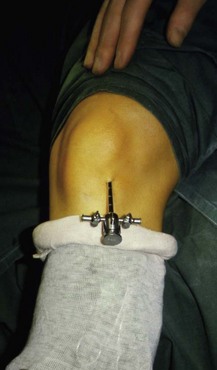8 Surgical management of joint disorders
Cases relevant to this chapter
2, 16, 26–27, 55–56, 76, 82, 97
Essential facts
1. Joint surgery is indicated when medical management has failed adequately to control pain or restore function.
2. Arthroscopic surgery is indicated for a number of joint disorders.
3. Osteotomy is less commonly used owing to an improvement in joint replacements, but is effective in younger male patients with medial compartment osteoarthritis of the knee.
4. Excision arthroplasty is used as a last resort or as an interim treatment; it can be part of the treatment protocol of an infected total joint replacement.
5. Arthrodesis is most often used for small joints in the hands, wrists, feet and ankles.
Arthroscopy
Arthroscopy is examination of a joint with a rigid endoscope. It was first used in the knee joint, but is now used for most major joints including the wrist, elbow, shoulder, hip, knee and ankle (Fig. 8.1). Arthroscopy was formerly commonly used for diagnostic purposes, but the use of computed tomography (CT) and magnetic resonance imaging (MRI) has largely supplanted this. In most situations, arthroscopy is now used for operative treatment of joint disorders (Box 8.1). Although it can be used in many joints, the majority of arthroscopies in clinical practice are performed on the knee or shoulder joint.
Box 8.1
Indications for arthroscopy
• Excision or repair of meniscal tears (knee)
• Joint debridement for osteoarthritis
• Repair of muscle tears (e.g. rotator cuff tear in the shoulder)
• Ligament repair (e.g. anterior cruciate ligament in knee)
• Fixation of osteochondral fractures
• Correction of joint instability (shoulder)
• Synovectomy for inflammatory arthropathy
< div class='tao-gold-member'>










